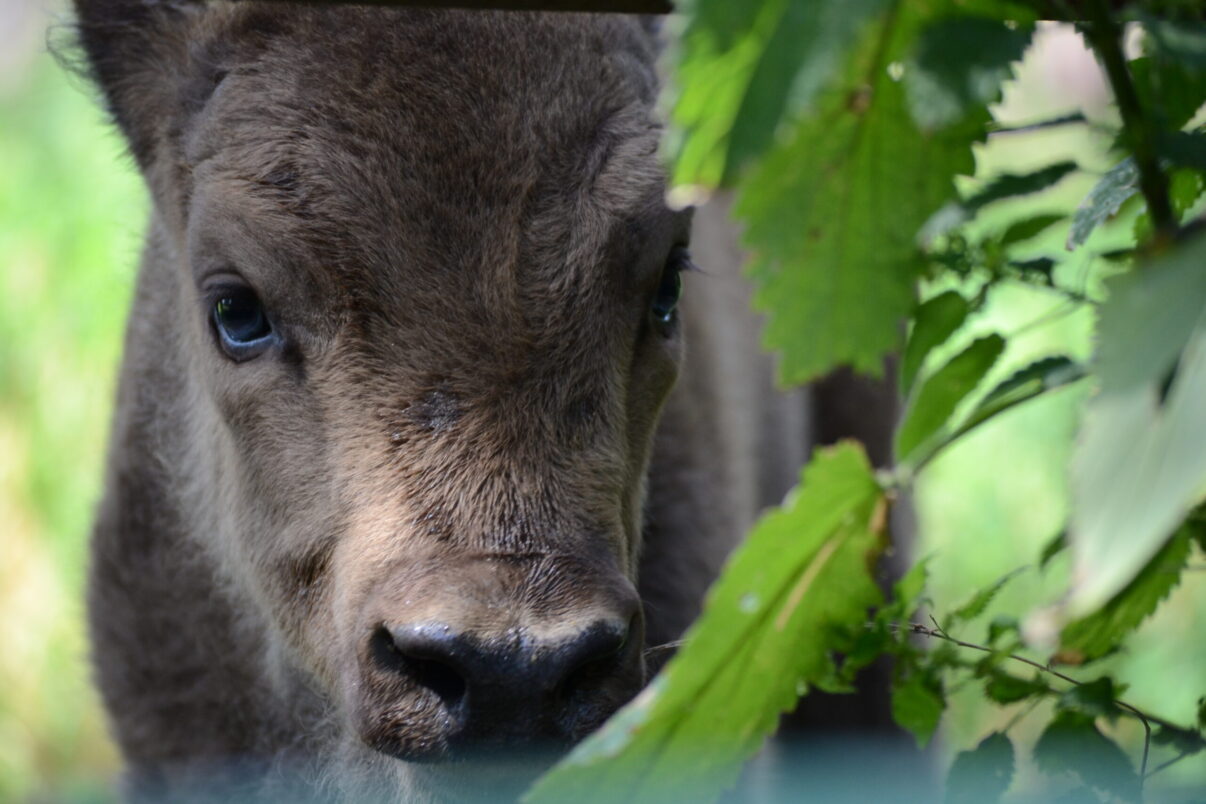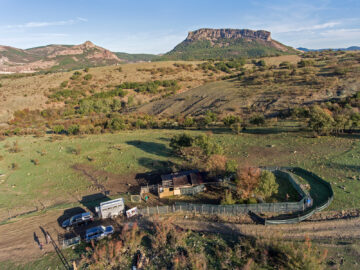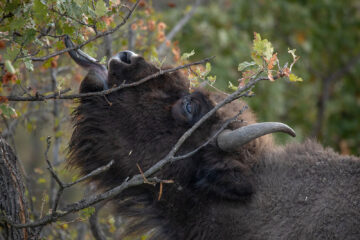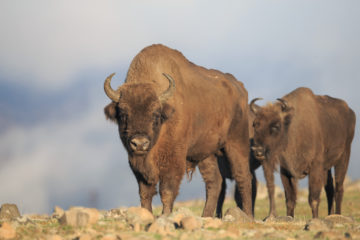After an absence of centuries, wild European bison began roaming the Rhodope Mountains of southern Bulgaria in 2019. With the reintroduced herd already multiplying, the addition of two more animals will boost herd viability and resilience.

Continuing a historic reintroduction
Bison rewilding in the Rhodope Mountains rewilding area in Bulgaria took another step forward at the end of last week with the arrival of two young females from zoos in Hungary and Slovakia. When a herd of seven European bison were released into the Studen Kladenets Reserve (part of the Rhodope Mountains rewilding area) last year, it was the first time the species had roamed free in the Rhodope Mountains for centuries.

Following the subsequent birth of three calves (one in 2019, two in 2020), last week’s arrival will further boost the herd. As they roam free with the existing herd in the Rhodope Mountains, the newly arrived bison will live alongside deer, wolves, vultures and many other rare and endangered species.
Creating mosaic landscapes
As in the Southern Carpathians of Romania, where Rewilding Europe and partners have been reintroducing bison since 2014, the animals will have a positive impact on local wild nature. As a keystone species, they will help to create biodiversity-rich mosaic landscapes (a mixture of wooded areas and open grassland) through their grazing and browsing, as well as enhance local food chains.

The fact that the bison reintroduced last year are already giving birth is a good indication that they are adjusting well to their life in the wild.
“We are hopeful that these latest animals will also settle in quickly to their new home,” says Dr. Hristo Hristov, Rewilding Officer with the Rewilding Rhodopes team. “Our long-term goal is to increase the size and improve the genetic diversity of the herd in order to create a more robust and viable breeding group.”
Scaling up
Once widespread across Europe, wild European bison were driven to extinction in the early twentieth century by hunting and habitat loss. Thanks to various reintroduction programmes around Europe, around 8500 European bison exist today (with about 6200 living free in the wild). Rewilding Europe is supporting efforts to return this magnificent animal to its ancestral lands, establishing wild bison populations in the Southern Carpathians and Rhodope Mountains and assisting with its comeback elsewhere.

Funded by Arcadia, a charitable fund founded by Peter Baldwin and Lisbet Rausing, Rewilding Europe has been working to restore a European bison population in Bulgaria’s Eastern Rhodope Mountains since late 2013, when five animals arrived at Studen Kladenets from Germany. After the animals adapted to their new enclosure, 2015 saw the first bison born in the Rhodopes for centuries (in captivity) added to the herd. In November 2017 two more bison were donated by Suhl Zoo in Germany, a former game reserve dedicated to breeding endangered European species. Since the herd was released into the wild in early 2019, three more calves have been born.
The role of zoos
The latest bison reintroductions are a donation from two European zoos – the Sóstó Zoo (in collaboration with Miskolc Zoo) in Hungary and the Bratislava Zoo in Slovakia. “We consider participation in the bison rewilding project in the Rhodope Mountains as another important step in the restoration of the wild European bison population”, explains Silvia Pirošková, Head of the Zoological Department of ZOO Bratislava. The two animals were selected for their genetic suitability, following the advice of the European Association of Zoos and Aquaria (EAZA).
Want to know more?
- Rewilding Europe’s work in the Rhodope Mountains
- Rewilding Rhodopes
- Rewilding Rhodopes Facebook page
- Witness rewilding in the Rhodope Mountains with the European Safari Company
